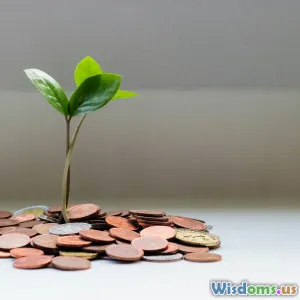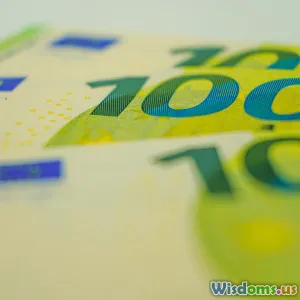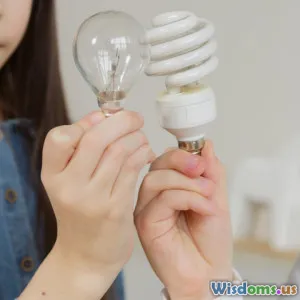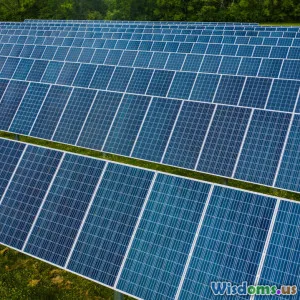
Comparing Green Versus Conventional Mortgages for Homebuyers
14 min read Explore the differences between green and conventional mortgages to help homebuyers make informed financial and environmental choices. (0 Reviews)
Comparing Green Versus Conventional Mortgages for Homebuyers
In today’s housing market, the desire to live sustainably is influencing not just how homes are built, but also how they’re financed. For eco-conscious buyers or those seeking energy efficiency, green mortgages offer an alternative to traditional lending. But what do these options really mean for you as a homebuyer? Let’s explore the definitions, distinctions, cost implications, long-term benefits, and the decision-making factors between green and conventional mortgages.
Understanding the Fundamentals of Green and Conventional Mortgages

Before delving into a direct comparison, it’s useful to clarify what green and conventional mortgages actually are.
Green mortgages, also called energy-efficient mortgages (EEMs), are specialized loans designed to reward buyers for choosing homes that either are highly energy efficient or will become so through renovations. These mortgages may offer benefits like lower interest rates, higher borrowing limits, or financial incentives for improving energy performance.
Conventional mortgages represent the standard loan products offered by banks and lenders. These aren’t tied to environmental features or energy standards; they’re based on your credit, income, and the property’s value, irrespective of the home’s energy footprint.
Example in Context
A buyer considering two similar homes—one recently retrofitted to meet Energy Star standards, the other older and less efficient—might qualify for a green mortgage on the efficient property but only a conventional mortgage on the other. Green mortgages are thus tied directly to tangible energy characteristics of the residence.
Eligibility and Criteria: What it Takes to Qualify

Qualifying for a green mortgage differs in subtle ways from a conventional loan.
Green Mortgage Eligibility
Most lenders require the home to meet recognized energy efficiency certifications, such as:
- ENERGY STAR® Certification: Indicates that the home performs in the top tier for energy use.
- LEED Certification: A rigorous standard awarded only to homes meeting strict energy and environmental benchmarks.
- Home Energy Rating System (HERS) Index: A lower score denotes higher efficiency; some lenders specify maximum HERS scores for eligibility.
In addition to the property, some green mortgages allow borrowers to finance energy improvements as part of the loan. For instance, under Fannie Mae’s HomeStyle Energy mortgage, buyers or refinancers can include up to 15% of the property value to cover upgrades such as solar panels or advanced insulation.
Conventional Mortgage Eligibility
Standard mortgages have no requirements regarding energy performance. As long as the home is structurally sound and meets valuation and legal standards, it qualifies for the mortgage upon the borrower meeting typical credit and income prerequisites.
Key Takeaway:
Green mortgages come with additional criteria linked to property energy standards, while conventional loans are more universally accessible across all home types.
Comparing Costs and Incentives

One of the primary concerns for prospective buyers is the cost difference between green and conventional mortgages—including both the immediate expense and long-term savings.
Upfront and Ongoing Financial Differences
- Interest Rates: Green mortgages can offer marginally lower interest rates (for example, 25–50 basis points reduction). This translates into meaningful savings over the life of a loan. The Federal Housing Administration’s (FHA) Energy Efficient Mortgage program is one example, allowing homebuyers to qualify for a larger mortgage amount factoring in estimated savings on utility costs.
- Higher Borrowing Limits: Given anticipated savings on utility bills, some programs allow slightly higher debt-to-income ratios, enabling buyers to qualify for bigger loans than with conventional programs.
Potential Fees
Green mortgages can sometimes involve extra inspections or certification fees (for example, energy audits costing $300–$700). But these are often offset by lower utility costs, rebates, or tax credits offered by federal, state, or local programs.
Example Scenario
Suppose a borrower takes out a green mortgage at a fixed 5.0% interest, rather than 5.25% for a conventional mortgage, on a $400,000 loan. Over 30 years, this could mean saving over $16,000 in interest alone—not accounting for lower energy bills.
Utility Savings: The Department of Energy estimates that ENERGY STAR homes save owners an average of 20% on heating and cooling. On a $2,400 annual bill, that’s about $480 in yearly savings.
Environmental Impact: Factoring in the Planet

Conventional mortgages finance any home regardless of its efficiency—or inefficiency—which means the overall carbon footprint could be high if the property wastes energy. Green mortgages, in contrast, encourage or require substantial environmental upgrades.
Benefits in Action
- Reduced Greenhouse Gas Emissions: By supporting homes with better insulation, high-efficiency HVAC, and on-site renewables, green mortgages directly lower dependence on fossil fuels. According to the U.S. Environmental Protection Agency, upgrading insulation alone can reduce a home’s greenhouse emissions by hundreds of pounds annually.
- Water Conservation: Some green mortgages cover installation of water-saving fixtures and landscaping, tying financial incentives to sustainable water use.
Example: An average non-efficient home can emit 8–10 tons of carbon dioxide yearly from electricity and heating. Energy-efficient homes, financed by green mortgages, often halve these emissions.
Home Value Retention and Resale Benefits

Does investing in home efficiency make it more attractive on resale, or are green features a passing fad? The evidence is clear that energy-efficient homes hold long-term financial advantages.
Market Trends
Studies by the Appraisal Institute and Zillow suggest that certified green homes can command price premiums of 3–9% over otherwise similar, non-certified properties. A 2022 report by Redfin highlighted that homes with solar panels sold for $9,274 more on average.
Buyers are growing more discerning about operational costs and sustainability. Green mortgages not only facilitate these improvements now, but also enhance future property value.
Conventional Mortgage Properties
While conventional loans can finance efficient homes, they don’t add special incentives to boost efficiency. Home value growth thus depends solely on market appreciation, rather than efficiency upgrades.
Pro Tip: If resale potential is a priority, certifying energy features and maintaining documentation can significantly enhance your home’s market value.
The Lender’s Perspective: Risk and Portfolio Appeal

Lenders see green mortgages as ways to diversify offerings and pursue sustainability goals, but risk concerns differ from the conventional route.
- Default Risk: Studies by the Mortgage Bankers Association have noted that green homes tend to default at slightly lower rates, as utility savings improve borrowers’ monthly cash flow.
- Lender Demand: Larger institutional investors increasingly favor green-backed assets, making these loans an attractive part of a diversified mortgage portfolio.
Example of Policy Movement
Fannie Mae, Freddie Mac, and many European banks are enhancing green lending programs, both from risk management and environmental due diligence standpoints, reflecting a shift towards “greener” portfolios in the industry.
Making the Best Choice: Key Factors to Consider

When choosing between green and conventional mortgages, several factors will influence your decision as a homebuyer:
- Property Type: Eligible for green loans? The home must already be energy efficient or capable of being upgraded.
- Budgeting for Upfront Costs: Will certifications or upgrades pay off through lower bills and possible loan perks?
- Long-Term Plans: Do you expect to sell the home soon for profit? Energy upgrades are more beneficial if you remain in the house longer.
- Location: State and local incentives for green mortgages or upgrades vary widely; investigate local programs and rebates.
- Loan Product Availability: Not all lenders offer green mortgages. Comparing offers and finding lenders experienced with green lending is key.
Practical Steps
- Get a professional energy audit before embarking on a green mortgage path.
- Compare estimated total costs (including closing, certification, and projected energy savings) between green and conventional mortgage offers.
- Seek out lenders with a track record in green financing for smoother processing and specialized knowledge.
Real-World Success Stories and Lessons Learned

Consider a couple in Minneapolis who purchased an older craftsman home in 2022. Opting for a green renovation mortgage, they financed energy upgrades—insulation, high-efficiency furnace, and triple-pane windows—during purchase. While their upfront loan application included a $500 energy audit and slightly higher closing documentation, their year-one utility costs dropped by nearly 40%, and their property appraised 7% higher post-renovation.
Similarly, a new homebuyer in California taking advantage of Freddie Mac’s GreenCHOICE Mortgage® was able to qualify for a larger home, as her expected solar panel and smart appliance savings lowered her overall debt ratio.
Lessons for Homebuyers
These examples highlight the importance of analyzing not just the visible mortgage terms, but the full cost-life cycle of the home. Where green mortgages are available, they can drive meaningful savings, improve living comfort, and leave a lighter ecological footprint.
Final Thoughts: Bridging Financial and Environmental Goals

Choosing a mortgage is as much about understanding your environmental priorities as it is balancing your budget. While conventional mortgages may offer broad simplicity and accessibility, green mortgages increasingly make sense for buyers seeking added value—financially and ethically.
In the end, your best mortgage is the one aligned with both your long-term financial goals and your philosophy of responsible living. By scrutinizing offerings, seeking trusted expert advice, and considering your lifestyle needs, you can turn a simple home purchase into a powerful investment in sustainability and savings.
Rate the Post
User Reviews
Popular Posts


















